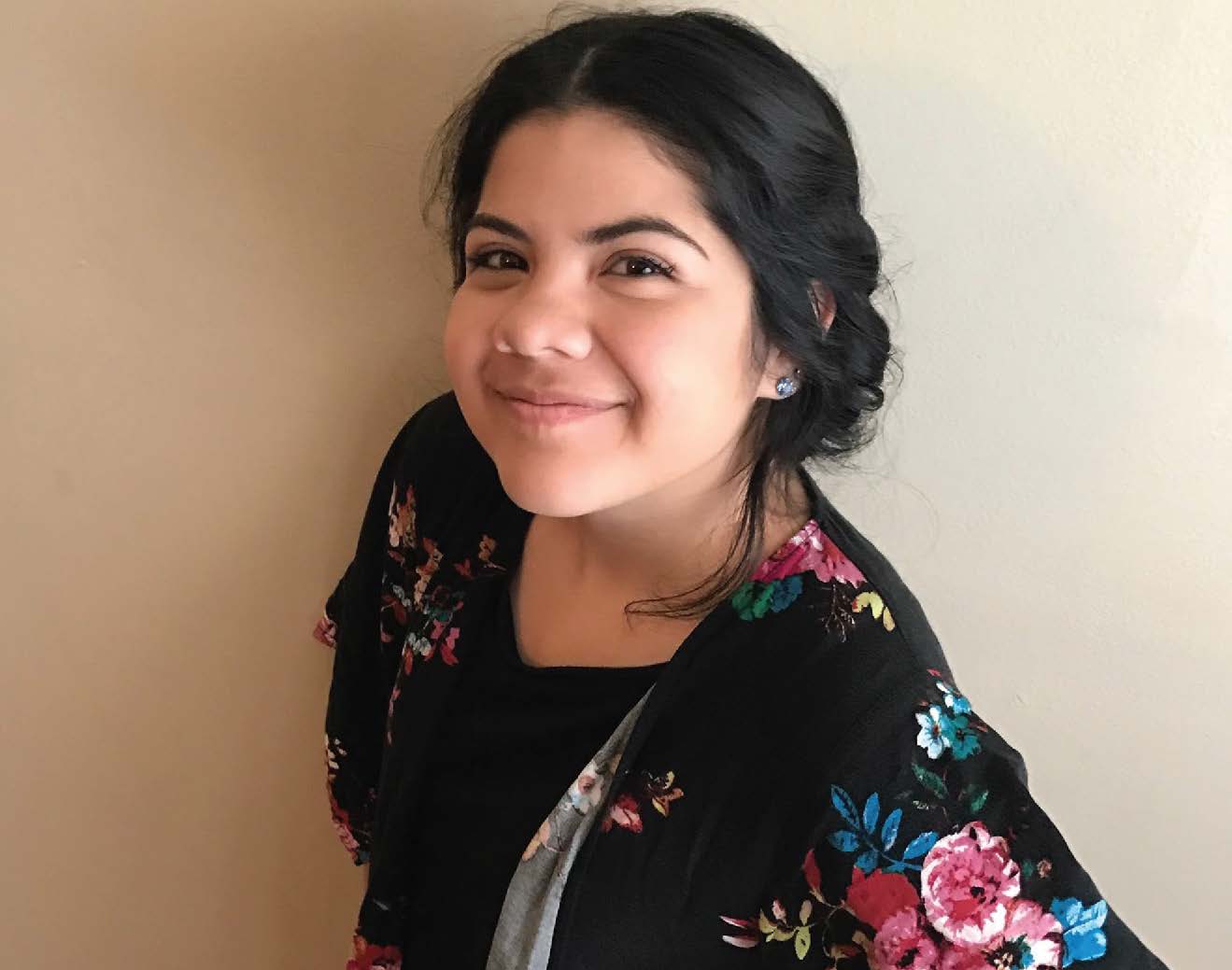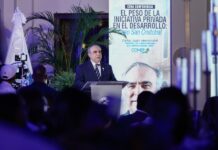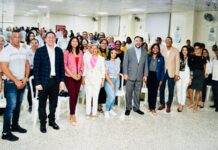[:en]After debuting last year, the El Museo Latino Artist Residency Program is back with three new artists in residence at the South Omaha museum through July.
The two-month residency. which began June 2, comes with a $1,000 stipend per artist and access to studio space, equipment and supplies as well as mentoring-networking and teaching-exhibit opportunities. The program’s designed to support local artists wherever they are in their practice.
This year’s three artists in-the-house are: Travis Apel, an established sculptor; Victoria Drake, a young painter who graduated from South High in 2014; and Daniel Castañeda, a muralist, jeweler and sculptor.
Apel is a Kansas City Art Institute and Metropolitan Community College graduate whose sculptures have been featured in exhibitions near and far. Drake studied at UNO and is also a teaching artist with Arts for All. Castañeda is pursuing a degree at MCC. His work’s been featured in local galleries and in murals.
El Museo Latino founder-director Magdalena Garcia is excited to give Omaha area artists this chance to further their craft and to interact with colleagues.
“Creating opportunities for our local artists of color is important,” Garcia said. “It’s appealing to me to try to create that environment for them, the organization and the community. It’s good to have local artists exposed to some of the things the museum’s doing.”
She can’t wait to see how residents respond to this intensive, immersive cohort experience.
“We expect great things from them. Travis is interested in experimenting with different forms, shapes and materials. Victoria’s going to concentrate on her painting over the summer. Daniel’s going to be spending more time painting with a variety of materials.
“I’m looking forward to see what they develop. All three are at different stages of their careers. It makes for an interesting mix. They’re going to bounce things off each other and hopefully learn from each other, too. Collaboration may come out of that conversation. Hopefully, it will be a growing experience for all of them.”
She said the artist-centered experience is an opportunity “to create synergy and camaraderie,” adding, “It’s nice to have a summer of artists. It’s really good for our community to know we’re working with our own local artists and to have them as role models for the youth who come here. Youth are able to see the artists working and can talk to them.
“This provides more access for artists to connect with community and for community to connect with artists.”
Professional connections are afforded, too, between the artists and visiting curators. Studio visits are expected from Mexican artist Humberto Chavez, internationally-recognized photographer and performance artist who previously served as Director of the School of Visual Arts in Yucatan, and from Carlos Tortolero, president of the National Museum of Mexican Art in Chicago.
“We’re opening windows or doors for our resident artists. Because of our connections,” Garcia said. “we can provide our artists an opportunity to learn first-hand what gallery directors are looking for.”
Enhancing work portfolios and getting exhibit opportunities are potential side benefits of the residency.
Garcia wants the experience to have a cumulative effect beyond each residency class.
“Hopefully, with our next generation, we can start grooming more of our own artists. I think it’s really important for our youth and community to see artists who look like them embody the drive, determination and passion it takes to be an artist.”
There’s satisfaction in offering the residency, Garcia said, “because there really is a need for artists to have this sanctuary when they can focus on their work in a supportive environment.” She added, “It provides time and space for them to practice their craft and do whatever they want to do. Last year, all three artists spent their time experimenting. I was pleased, so I’m hoping the same with this year’s group.”
If long-deferred renovations are ever made to the building, then Garcia said resident artists could be better accommodated with fully-dedicated studio spaces rather than shared prep area-classroom spaces.
She foresees a future live-in residency being offered.
Meanwhile, Garcia’s pleased the residency does give artists two vital things they need: time and space.
“I don’t think people understand all the time and investment an artist has to make. It’s not like you snap a finger and it’s done. You have to go through a whole creative process. If they didn’t love it, they wouldn’t be investing that much time. It’s that passion and that drive that makes things happen.
“El Museo Latino is honored to be able to play a role in strengthening our artistic community and providing artists with greater opportunities for growth.”
The public can meet the artists at the museum’s next Third Thursday program on June 15 from 6 to 9 p.m. El Museo Latino is located at 4701 South 25th Street.
Applications for the next residency round open in February.
Visit www.elmueolatino.org.
Read more of Leo Adam Biga’s work at leoadambiga.com.[:es]Después de debutar el año pasado, el Programa de Residencia de Artistas en El Museo Latino está de vuelta con tres artistas en residencia en el museo del Sur de Omaha, acabando en el mes de julio.
La residencia de dos meses, que comenzó el 2 de junio, incluye un estipendio de $1,000 por artista y acceso al espacio de estudio, una red de tutoría y oportunidades de exhibiciones de enseñanza. El programa está diseñado para apoyar a los artistas locales sin importar el momento en que se encuentren en su carrera.
Los tres artistas para este año son: Travis Apel, escultor establecido; Victoria Drake, una joven pintora que se graduó de South High en el 2014; y Daniel Castañeda, un muralista, joyero y escultor.
Apel es graduado del Kansas City Art Institute and Metropolitan Community College y sus esculturas han sido parte de diversas exhibiciones a nivel local y fuera del Estado. Drake estudió en UNO y ha estado dando clases a artistas con Arts for All. Castañeda está trabajando en obtener un grado en MCC. Su trabajo ha sido expuesto en galerías locales y en murales.
Magdalena García, fundadora y directora de El Museo Latino está emocionada de poder dar esta oportunidad a los artistas del área de Omaha para mejorar sus habilidades y poder interactuar con colegas.
“Crear oportunidades para nuestros artistas locales de color es importante”, dijo García. “Me es interesante intentar crear ese ambiente para ellos, para la organización y para la comunidad. Es bueno que los artistas locales estén expuestos a algunas de las cosas que está haciendo el museo”.
Ella no puede esperar a ver cómo responden los residentes a esta experiencia intensiva y envolvente.
“Esperamos grandes cosas de ellos. Travis está interesado en experimentar con diversos formatos, formas y materiales. Victoria va a concentrarse durante el verano en su pintura. Daniel pasará más tiempo pintando con una variedad de materiales. Espero con ansias poder apreciar cómo se desarrollan. Los tres están en etapas diferentes de sus carreras. Es una mezcla interesante. Van a aprender los unos de los otros. Puede haber colaboraciones en base a esas interacciones. Si todo sale bien, será una experiencia que les permitirá crecer”.
Ella dio que la experiencia enfocada en el artista es una oportunidad “para crear sinergia y camaradería”, agregando: “Es muy bueno poder tener un verano de artistas. Es muy bueno para nuestra comunidad saber que estamos trabajando con nuestros artistas locales y tenerles como ejemplos a seguir para los jóvenes que nos visitan. Los jóvenes pueden ver a los artistas trabajando y hablar con ellos. Esto proporciona más acceso para los artistas y para conectar con la comunidad y para que la comunidad conecte con los artistas”.
También se generan conexiones profesionales entre los artistas y los curadores que visitan. Las visitas al estudio se esperan por parte del artista mexicano Humberto Chávez, fotógrafo reconocido a nivel mundial y artista de performance quien previamente fungió como Director de la Escuela de Artes Visuales en Yucatán, además de la presencia de Carlos Tortolero, Presidente del National Museum of Mexican Art en Chicago.
“Estamos abriendo puertas o ventanas para nuestros artistas en residencia. Gracias nuestras conexiones podemos proporcionar a nuestros artistas la oportunidad de aprender de primera mano lo que buscan los directores de las galerías”, dijo García.
Mejorar sus portfolios de trabajo y obtener oportunidades para ser parte de exhibiciones son algunos beneficios potenciales de la residencia.
García quiere que la experiencia tenga un efecto cumulativo más allá de cada clase de residencia.
“Esperamos que con nuestra próxima generación podamos comenzar a preparar más a nuestros artistas. Yo considero que es muy importante para nuestros jóvenes y para nuestra comunidad ver artistas que, como ellos, encargan el empuje, determinación y pasión necesarias para ser un artista”.
Existe una satisfacción al poder ofrecer la residencia, dijo García, “pues en verdad hay una necesidad de los artistas de tener este santuario en donde se puedan enfocar en su trabajo en un ambiente alentador”. Ella además agregó: “Les permite contar con el tiempo y el espacio que necesitan para practicar su oficio y hacer lo que quieran. El año pasado los tres artistas pasaron su tiempo experimentando. Me dio mucho gusto, por lo que espero que pase lo mismo con el grupo de este año”.
Si las aplazadas renovaciones al edificio se llevan a cabo, García dijo que los artistas residentes podrán entonces estar aún mejor en espacios de estudio completamente dedicados para sus actividades en lugar de compartir espacios de preparación y aulas.
Ella considera que en un futuro pueda ofrecerse una residencia con la posibilidad de vivir en el mismo espacio.
Mientras tanto, García se siente bien pues la residencia proporciona a los artistas de dos cosas vitales que necesitan: tiempo y espacio.
“Yo creo que las personas no entienden todo el tiempo y la inversión que tiene que hacer un artista. No es como si se pudieran tronar los dedos y todo está listo. Hay que pasar por todo un proceso creativo. Si no les gustara no invertirían tanto tiempo en ello. Es su pasión y es lo que les empuja a hacer estas cosas. El Museo Latino se siente honrado de poder jugar un papel en el fortalecimiento de nuestra comunidad artística y en proporcionar a los artistas de grandes oportunidades de crecimiento”.
El público puede conocer a los artistas en el siguiente tercer jueves del programa de 6 a 9 p.m. El Museo Latino está ubicado en 4701 South 25th Street.
El periodo para recibir solicitudes para la siguiente residencia comenzará en febrero.
Visite www.elmuseolatino.org.
Lea más del trabajo de Leo Adam Biga en leoadambiga.com.[:]




